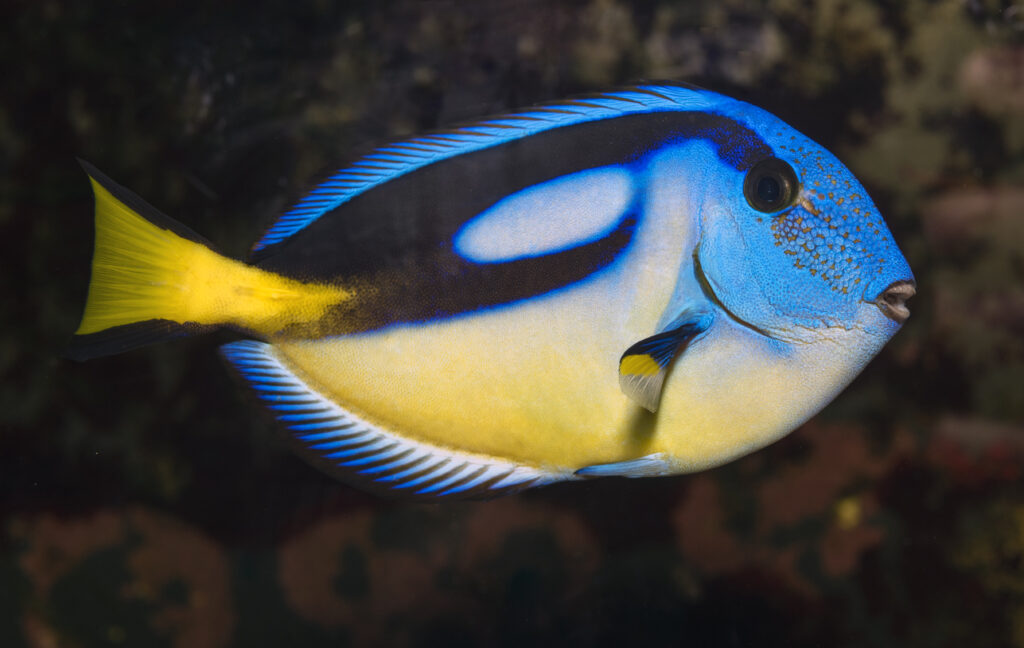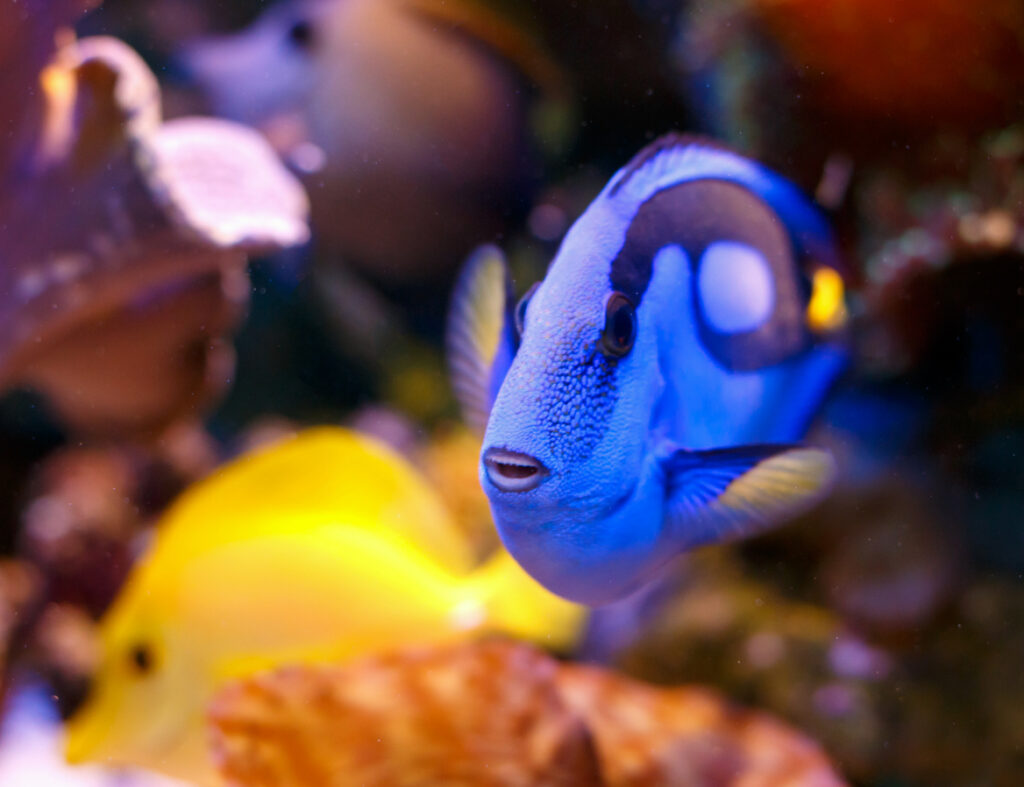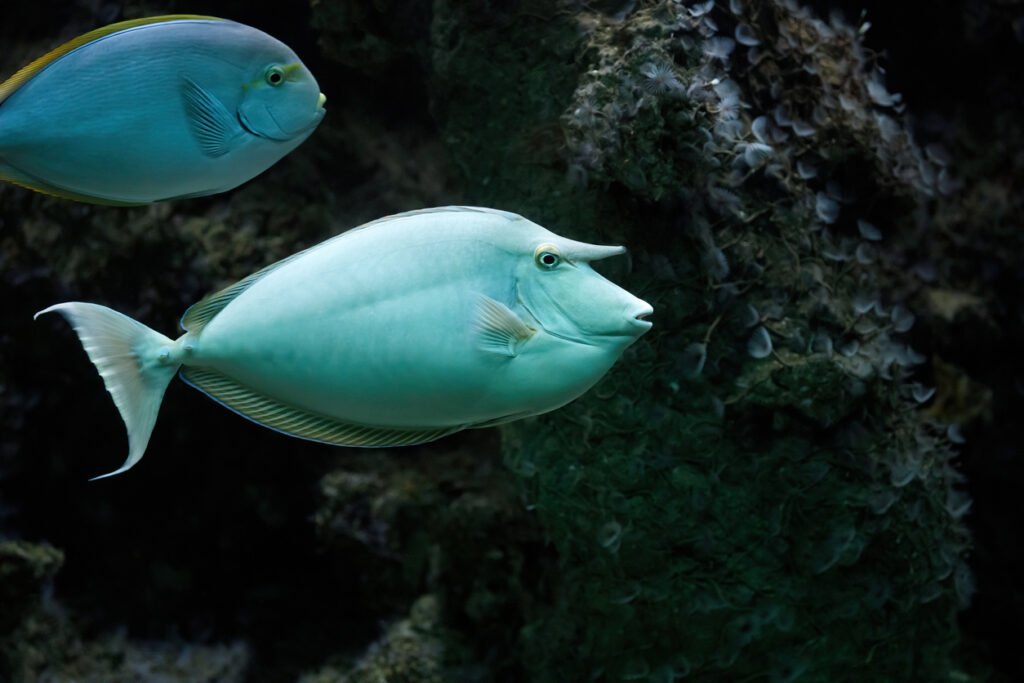There are many different species of tropical marine fish around the world, all as beautiful and interesting as the next. However, there are some that you may recognise more quickly than others, such as the tang fish. But did you know there are over 80 different types of tang fish, not just that very popular one from the Disney Pixar film?
Here we learn a little bit more about the fascinating family of tang fish and some of the must-know facts about them.
What are tang fish?
Tang fish are part of the Acanthuridae family of fish, with over 80 individual species. These species are categorised into 6 different genera, including:
- Acanthurus: which includes powder blue tang (Acanthurus chirurgus)
- Paracanthurus: which has only one member, the blue tang (Paracanthurus hepatus)
- Ctenochaetus: which includes bristletooth tangs (Ctenochaetus). They are called such because they have small flexible teeth.
- Naso: which includes bignose unicornfish (Naso vlamingii). This genus is more commonly referred to as unicornfishes, because of the protrusion from their forehand in some species.
- Zebrasoma: which includes the yellow tang (Zebrasoma flavescens)
- Prionurus: which includes the razor surgeonfish (Prionurus laticlavius)
As you can see, tang fish are a very diverse family, and may often be referred to by other names depending on the genera.

Top facts about tang fish
Let’s have a closer look at some of the interesting information about these species!
Coral reefs are their natural habitat
Tangs are usually found in or around coral reefs in the Indian, Pacific and Atlantic Oceans. The reefs provide excellent protection from predators, allowing their slender bodies to weave between tight spaces that larger predators cannot access.
Watch out for the sharp spine
Touching wild fish is never advisable as it can cause the fish to feel stressed and threatened but as well as that, it can potentially pose a threat to you. Tangs, for example, have an incredibly sharp scalpel towards the rear of their body that they can use to defend themselves if they feel vulnerable. This is a clever defence mechanism that can also be used to fight another male for dominance. This is why they are given the name ‘Surgeon fish’.
They play an intermediary role in the food chain
As intermediaries in the food chain, tangs play a vital role in their ecosystems. Their main diet consists of algae which can be detrimental to coral reefs by suffocating it. Tangs keep this under control through eating the algae from the reefs, preventing the algae from overtaking. As well as this, tangs are an important source of food themselves for other consumers in the food chain.

Most tangs are broadcast spawners
So that they can maximise their chances of fertilisation, tangs release thousands of eggs and sperm into the water at the same time, where they then mix. The spawn usually hatch within a few days and can lack rudimentary features such as eyes, mouths, or even a heartbeat. They rely heavily on currents before resting in coral reefs or mangrove forests, before moving towards open coral as they develop. Spawning happens around the lunar cycle when the moon is full. The lunar cycle is critical to survival as many reef fish and corals spawn during this time, creating a mass spawning and increasing the probability of fertilization and survival.
They can live up to 30 years
Tang fish can live anywhere from 8-30 years, and some species have been known to live longer. In aquaria, they can sometimes have a longer lifespan due to the extra care they receive!
Come and see our tang fish at Blue Planet Aquarium
At Blue Planet Aquarium, we’re fortunate enough to have multiple tang species swimming around our tanks. Their brilliant colours provide vibrance and joy to our aquarists and visitors. The tangs at Blue Planet Aquarium can be found across the Ocean and Coral Cave Exhibits.
Regal tang

The regal tang (Paracanthurus hepatus), known for its vibrant blue body and yellow tail, is a popular attraction at the Blue Planet Aquarium thanks to popular cinematic characters. These fish inhabit the reefs of the Indo-Pacific, often found swimming in pairs or small groups.
Vlamingi tang
The vlamingi tang (Naso vlamingii), also known as the bignose unicornfish or scribbled unicornfish, is recognisable by its elongated body and distinct markings. Native to the Indo-Pacific region, these tangs thrive in coral-rich environments. Vlamingi tangs are known for their neon blue hues and distinctive lips!
Unicorn tang
The unicorn tang (Naso unicornis) is notable for the horn-like protrusion on its forehead, which gives it its name. Found in the Indo-Pacific, these tangs are usually seen in pairs or small groups around coral reefs. Their greyish-blue body and unique horn make them a fascinating sight to behold in the Ocean Exhibit.

Purple tang
The purple tang (Zebrasoma xanthurum) is a striking species with a deep purple body and vivid yellow tail. Originating from the reefs of the Red Sea and Arabian Sea, they prefer rocky substrates and coral reefs. Their bright colouration and energetic swimming patterns make them a favourite among aquarium visitors.
To experience these wonderful fish first-hand, book your tickets to Blue Planet Aquarium today!
